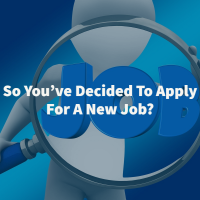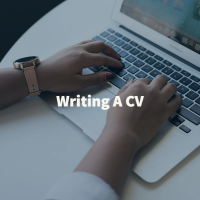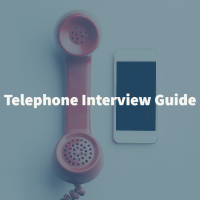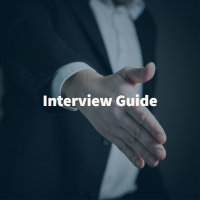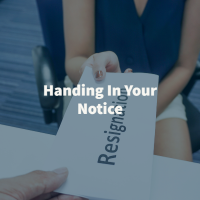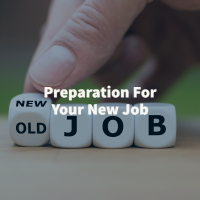Your CV is vital to finding that new job or embarking on a new Motor Trade career. First impressions are paramount to your success. You will not get another chance to make a first impression to prospective new Automotive employers or perhaps more importantly Automotive recruiters. Both can sometimes decide in seconds whether you may be suitable for the job you are applying for. Be assertive with your CV, grab their attention and keep it! No matter how perfect you are for the role, your CV will decide whether you get the call to discuss the vacancy let alone an interview. So, take your time to read the guidelines below on how best to secure that good, first impression in stage 1 of the recruitment process; increasing your chances of finding your dream job.
Please note: The bold titles here are to signify the subtitles you should use on your CV.
Personal Details
Your name should appear at the top of the CV. Use your full name, no nicknames or shortening of names. Make sure your contact details are clear, correct and easy to find. Include your Landline, Mobile, email, home address.
Tip: DO NOT put your work number down UNLESS you want to start receiving calls at your place of work. Be careful with your email address. Funny or offensive email addresses are fine for personal use. However, we strongly recommend that you consider setting up a new account with a professional title if this is the case. Remember employers and recruitment consultants could be looking at 100's of CVs. Give them a reason to want to see you. Please do not give them a reason to discount you at this stage. Do not make the error of thinking a potential new employer is going to think something is funny or appreciate your wacky sense of humour.
Your right or eligibility to work in the UK and Nationality should be clearly marked.
There is no need to put your DOB, Sex, Marital Status, or Religious Beliefs on your CV.
Profile
Well done. You have managed to get them to read this far. Trust us when we say a large proportion of CVs have already been discarded. Let's keep them reading!
This should be a brief outline of your skills and attributes with particular attention paid to keywords that are relevant to the job role you're applying for. It should encourage the reader that their time is well spent reading your CV.
Any claims you make should be factual, accurate and be able to be backed up at an interview.
Tip: Don't forget to review your CV while preparing for an interview so you can prepare for questions regarding your claims.
Do not confuse your profile with your hobbies and interests. This is a professional profile of you as a potential employee. They do not want to know that you enjoy playing Sunday League Football.
Bullet points are a good way of describing yourself. Employers and recruiters like this style as it gives them a rapid picture of the person represented on the CV.
Work Summary
One of the biggest mistakes people make at this point, and a real turn off for employers and recruiters is the chronological order of your CV. You start with your most recent job first and go back from there. Nobody thinks that a first job is more relevant than the most recent one.
You should list:
- Dates of employment (months and years)
- Employers name and your job title
- Tip: Do not say you are the Sales Manager if you are not. If you do get a job offer and your reference from your current employer doesn't back up what you say, all your hard work could have been for nothing.
Try and make sure anything you highlight is relevant to the job you are applying for and any achievements are backed up with numbers.
Tip: Your reason for leaving any job can be discussed with your recruiter or at interview stage with your potential new employer and should certainly not be put on your CV.
If you went travelling for a year or had some time out, do not leave a gap in employment history. Recruiters and HR are a cynical bunch, and gaps lead to suspicion. Just list what you were doing in the same way as your employment details.
Tip: If you want to be able to negotiate strongly when it comes to salary discussions do not mention your current salary. By sharing your current salary, you risk getting a lower offer than they had assigned for the role. You can also risk being discounted if your salary is a lot higher than what is on offer.
Education
This should be the first header after your work history. As long as you don't make any serious mistakes, the chances are your CV is being taken seriously and you have a chance of getting a call.
Do this in the same format as your work history. This should be in reverse chronological order with most recent qualifications first.
Tip: Do not confuse training you have received professionally with your formal education details; these should be separated.
Keep it brief. Bullet points are the most effective way of presenting this information. You can put any specific achievements in, especially if they are relevant to the job you are applying for but remember, keep it brief!
Professional Training/Skills
Again, put this in reverse chronological order.
This needs to be relevant to the job you are applying for.
Tip: It is also worth mentioning when professional accreditations expire or, are due for renewal.
Computer packages you have experience using used and that you are comfortable using is very relevant and should be listed.
Professional Memberships along with dates of membership should also be listed here.
Hobbies And Interests
Never has such a small part of a CV caused so many derailments of a new career before it has even begun.
This should be a small portion of your CV. Any interests that are relevant to the job can be mentioned, other than that keep to an absolute minimum.
Tip: Remember the reader is still probably looking for reasons to discount you. They probably do not need nor want to know you collect stuffed animals or have the world’s most extensive collection of beer mats.
Referees
This is quite straightforward.
'References available on request' is all that's required.
Tip: If you list names, you risk people being contacted prematurely possibly causing you at best embarrassment and at worst a painful conversation with your boss.
The above will make sure your CV is both ordered and laid out correctly with succint information that a hirer is looking for - here are a few more pointers to ensure your CV works towards landing you an interview!
General
- Use a clear font; our suggestion would be Arial 10
- Do not write in the third person. Refer to yourself as I rather than by name. There seems to be a trend of people doing this; trust us this doesn't help!
- Keep it to the format above. A story written as a continuous flow of words is tough to read at best; a massive turn-off at worst
- Keep it upbeat and positive. Do not start ranting about how bad a previous boss or job was
- Keep to 2 Pages max. Employers and recruiters are often very busy and often under time pressure, make it easy for us
- No pictures
- Please make sure you check your CV before you send it. Always make sure it is relevant to the job you are applying
- Keep the formatting of your CV simple. Try to avoid putting too many text boxes or complicated formats. It does not make you look clever; it just increases the chances of it being unreadable
- Complete your CV in Word. It is universal and makes life easy both for your recruiter and employer.
- Trust me, having to take the time to open a new programme to look at your CV may mean it doesn’t get read at all/will not endear yourself to the reader.
We know you are an individual, and you want your personality to come across, but your CV is not the place for it. Save it for when you are in front of the interviewer. That's your chance to shine! We can make that bit happen, good luck!
Next in our series is Social Media Exposure - your CV will hopefully have made it onto an Automotive Employers desk by now - don't give them a reason not to see you. Read our advice on Social Media Exposure here.
Not a user of Social Media, or already got the optimal privacy settings on your profile - click on the relevant image below to continue on your Job Search Journey:

